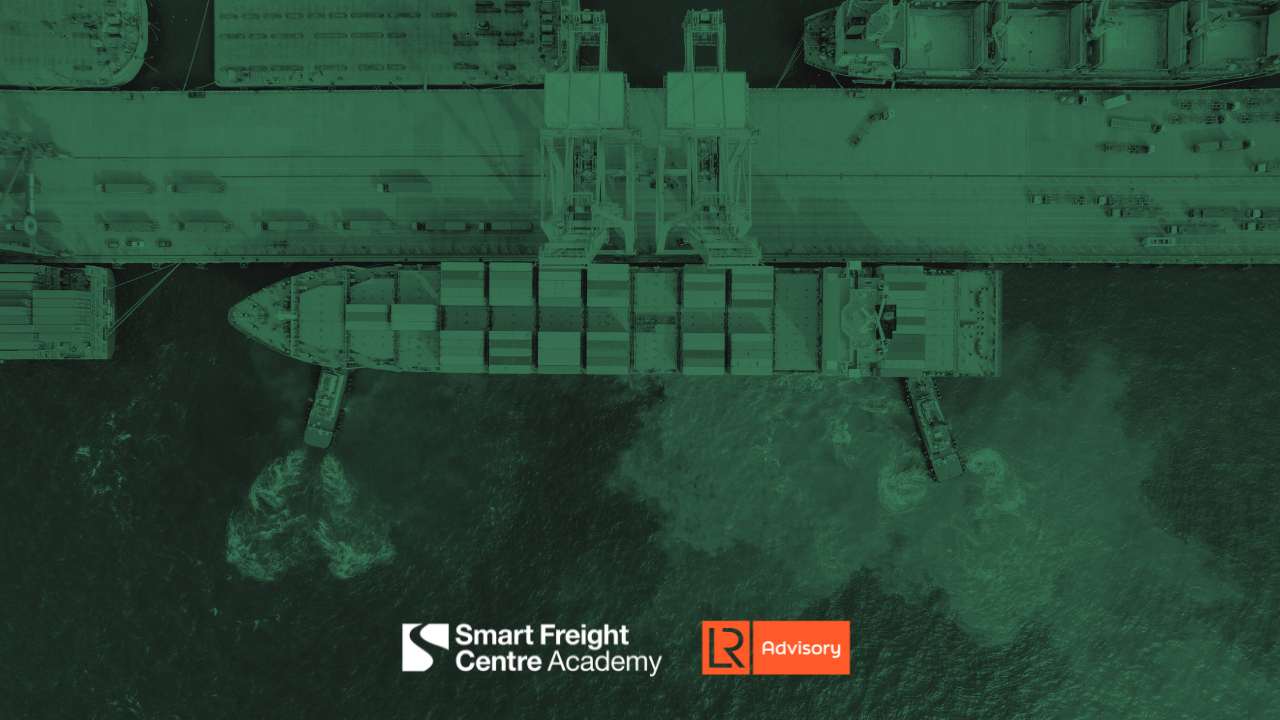
Tariffs, Trade, and Transition: What U.S. Maritime Policy Means for Sustainable Freight

Based on insights from the Smart Freight Centre and Lloyd Register webinar, June 10, 2025: Unchartered waters: The impact of tariffs on service networks, freight rates, and emissions.
Introduction
Two U.S. policy instruments—the USTR Measures and the Ships for America Act—are reshaping the global maritime landscape. While aimed at protecting national interests and reviving U.S. shipbuilding, these measures have unintended consequences for freight procurement, logistics strategy, and decarbonization goals. Understanding their broader implications is essential for sustainability-minded professionals.
1. A New Era of Cost Pressures and Trade Complexity
The new tariffs could significantly inflate the cost of moving goods to and from the United States.
“USTR alone could add between $2.4 and $3.5 million in port fees per call for a large container ship,” said James Frew, Business Consultancy Director at Lloyd’s Register, during the Smart Freight Centre webinar on June 10, 2025. “That’s roughly equivalent to the total freight cost itself—effectively doubling it.”
The cost burden is expected to be passed along the chain to shippers, OEMs, and end consumers. Options for rerouting are limited, however, as infrastructure constraints in Canada and Mexico restrict viable transshipment alternatives.
“Realistically, transshipment via Prince Rupert or Mexico isn't scalable,” Frew added. “The port capacity and customs processes simply can’t absorb significant volumes.”
Rather than rerouting cargo, many carriers may simply absorb and pass on costs, leading to reduced profitability, tighter margins, and higher prices across supply chains.
2. Strategic Risk for Supply Chain Resilience
The measures introduce uncertainty into long-term fleet planning. “Shipowners are already reconsidering newbuild orders, especially from Chinese shipyards,” Frew explained. “That’s going to extend the operational lifespan of older, more polluting ships.”
As a result, U.S.-bound trade lanes now demand greater scrutiny in route design, vessel selection, and contracting strategy. For companies sourcing heavily from Asia, geopolitical exposure is now a procurement risk—not just a shipping detail.
This adds complexity to strategic sourcing decisions, particularly for logistics and procurement teams under pressure to cut emissions while ensuring reliability and cost control.
3. Environmental Gains on Hold
While the measures are political, they have a direct impact on maritime sustainability. “The great irony,” Frew noted, “is that some of the world’s most efficient, technically advanced vessels are being built in China—and they’re now being penalized regardless of their emissions performance.”
Fleet renewal could slow as shipowners weigh tariff exposure, stalling the adoption of more efficient vessels. And because the tariffs are origin-based—not emissions-based—even zero-emission ships built in China may still face financial penalties.
Without a carbon or emissions-based lens, the policy may undermine efforts to align freight movement with net-zero targets.
4. What You Can Do Now
Procurement and logistics leaders should take proactive steps:
- Map exposure to shipbuilders, owners, and operators subject to these measures.
- Prepare contract buffers to accommodate tariff-linked surcharges.
- Accelerate engagement in clean shipping initiatives, including book & claim and green corridors.
- Monitor policy enforcement, especially post-2025, as election outcomes may influence scope and intensity.
As Frew emphasized, “These measures aren’t guaranteed to go away with a new administration—previous tariffs introduced under Trump were largely retained under Biden. They could be here to stay.”
As Frew emphasized, “These measures aren’t guaranteed to go away with a new administration—previous tariffs introduced under Trump were largely retained under Biden. They could be here to stay.”
Conclusion
The U.S. maritime tariff policies mark a turning point in global logistics. For sustainability and procurement professionals, they demand more than compliance—they require foresight, agility, and informed decision-making. While these policies seek to localize control and stimulate U.S. shipbuilding, they also reshape the strategic landscape for freight movement and decarbonization.
Smart leaders will treat these measures not just as obstacles—but as signals to future-proof operations.
Take the Next Step
Explore Lloyd’s Register’s technical insights on maritime strategy.
Want to learn how to navigate maritime policy shifts while meeting decarbonization goals? Enroll in our courses below:
Courses related to this subject:
Who we are
The Smart Freight Centre Academy is the education and knowledge-hub of globally recognised NGO Smart Freight Centre, a leader in freight decarbonization practices, standards and frameworks.
Copyright © 2025
SFC Academy Approval
Would you like custom training for your team or organization? Perhaps you'd like one of the standrad courses delivered only to your team or business unit? The SFC Academy is proud to offer a custom training service whereby we work with you to ensure your specific needs and learning objectives are addressed in a custom format. Please contact us for more information